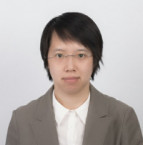Functional limitations are allowed in China to provide a broad scope of protection for patentees. From the perspective of China Patent Office, technical features defined by function in a claim shall be construed as covering all the means that are capable of performing the function, as prescribed in the Guidelines for Examination. This encourages inventors to draft claims with functional features, intending to cover almost all possible implementations.
On the other hand, when a patent with function limitations is asserted for infringement in litigation, the protection scope decided by courts is not as broad as that granted by the patent office. As regulated in Article 4 of Supreme Court Judicial Interpretation on Patent Infringement Litigation 2009, technical features defined with functions or effects shall be interpreted based on embodiments recorded in the description, drawings and equivalents thereof. Therefore, courts are actually narrowing the protection scope to embodiments literally in the patent.
In SEB S.A. v. Guangdong Qifeng Stainless Steel heard by Guangdong High Court in 2013, the court finds a functional feature in Claim 1, i.e., “the control member engages the driving arms to control radial movement of the driving arms.” There is no detailed structure on how to engage the control member with the driving arms, but only the function or objective of such engaging, i.e. “controlling radial movement of the driving arms.” According to the patent description, the driving arms have two embodiments, one is that two driving arms are disposed oppositely and partially overlapped, and the other is that two driving arms are disposed oppositely without any overlapping.
Finally, the court decided that in this case Claim 1 has two protection scopes corresponding to above two embodiments. The court recognizes that all technical features for every embodiment shall be separately and in parallel considered as embodiments to be included in functional features. In view of this, the court is encouraging inventors to create and disclose more embodiments for functional features to pursue technological advances. This is also consistent with the spirit “disclosure of inventions in exchange for protection by authority” of China’s patent law.
The same legal logic is shown in a judgement newly issued by Beijing IP Court in March 2018, which relates to “a synchronizing module” in a computer program. The court decides that the synchronizing steps in the program recorded in the description should limit the protection scope of Claim 1 and such scope should not be extended to all implementations to “keep synchronized.”
Although embodiments are so critical for determining patent scope, one important issue worthy of attention in functional limitations is that not all embodiments literally recorded in the description are definitely considered as covered by functional limitations. Only those embodiments complying with the objective of the patent shall be considered as supporting functional features. Although not regulated at a high level in judicial interpretations from the Supreme Court, this rule has been incorporated by a Guideline for Patent Infringement Cases drafted by the Beijing High Court in 2017. In legal practice, this rule is not only binding for cases heard by the Beijing High Court.
As shown in a case heard by Guangdong High Court in 2017, Philips Consumer Lifestyle B.V. v. Foshang Jutian Electric, the court finds a technical feature – “an air guide member being provided for directing the air flow essentially upwards into food present in the food preparation chamber” – in Claim 1 to be a functional limitation. Then, the court evaluated four embodiments related to the air guide member in the patent description and drawings, FIG. 1, FIG. 3A, FIG. 3B and FIG. 8, respectively. Finally, the court found that only three structural alternatives shown in FIG. 3A, FIG. 3B and FIG. 8 can be considered to fall within the above functional feature, while a structure shown in FIG. 1, “the frusto-conical upwardly tapering air guide part,” shall not be covered by such function.
The reason lies in that the technical problem in the background of the patent cannot be solved by the above frusto-conical feature. Specifically, purpose of the patent is to prevent the air from swirling and therefore direct the air upwards “vertically,” while the frusto-conical upwardly tapering air guide part described in the specification can only play a role of assisting to guide the air to an upwardly-inclined flow but not “vertically.” Moreover, the patentee emphasizes such “vertically upward air” feature as an inventive point when validity of the patent is challenged. Therefore, this frusto-conical feature structure is excluded from protection scope of functional limitation.
All these legal cases provide excellent guidance for inventors on how to draft claims. The proposal is that claims are preferred to be drafted without functional features unless necessary. Although it seems that a broad patent scope is granted, this broad scope is hard to be enforced for patent infringement litigation in legal practice. Especially regarding information technology.










